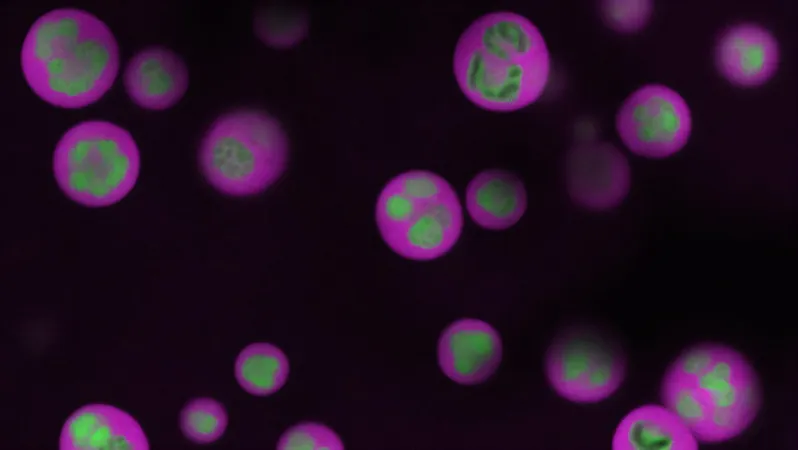
Unlocking the Nucleolus: A Revolutionary Insight into Ribosome Assembly
2025-07-02
Author: Wei Ling
Unveiling the Secrets of Protein Synthesis
In the intricate world of cellular biology, proteins are the catalysts of life, orchestrating a multitude of functions within cells. Yet, despite our understanding of protein production, a crucial component—ribosome assembly—has eluded scientists, hiding deep within the nucleolus until now.
Princeton Engineers Break New Ground
Princeton University engineers have cracked the code to observing ribosome assembly by devising an innovative technique that allows researchers to delve into the nucleolus without disrupting its delicate structures. Previous techniques often resulted in cell damage, leaving scientists with limited insights into this critical cellular hub.
"This is a game changer; we can now observe processes in the nucleolus like never before," claims Clifford Brangwynne, a leading Chemical and Biological Engineering professor at Princeton.
Creating an Artificial Nucleolus for Discovery
In an unprecedented achievement, the team not only mapped nucleolar activity but also engineered a simplified, artificial version of the nucleolus. This model will enable further exploration and validation of their findings, promising exciting advancements in cell biology.
The Nucleolus: A Marvel of Cellular Engineering
The nucleolus stands as the largest structure within the cell nucleus, playing a vital role in both cell growth and stress response. Its primary mission? To construct ribosomes, the very scaffolds that facilitate protein synthesis. Newly published research in the journal 'Nature' sheds light on how essential components are assembled within this enigmatic structure.
A Dance of RNA: The Assembly Line of Life
In this groundbreaking study, researchers used cutting-edge sequencing and imaging techniques to track RNA movements within the nucleolus. Components are systematically assembled into ribosomes as they transition through three distinct layers, each with its own role in the assembly process.
Postdoctoral fellow Sofia Quinodoz and graduate student Lifei Jiang led this research, revealing how disruptions in RNA processing could drastically affect nucleolar structure.
Inside-Out: The Surprising Dynamics of Nucleolar Structure
Interestingly, the study found that alterations in RNA behavior could cause the nucleolus to turn inside out, creating unexpected structures. Insights into these phenomena could pave the way for understanding the broader implications on cell health.
Quality Control in Ribosome Production
Collaborating with ribosome experts from other institutions, the Princeton team induced living cells to create novel, human-designed nucleoli, uncovering critical quality control checkpoints that govern ribosome assembly. Each step must be completed before moving on, ensuring the integrity of the ribosomal RNA.
A New Frontier: Understanding Disease Mechanisms
With these pioneering tools at their disposal, Brangwynne and his team are now turning their attention towards diseases such as cancer, where ribosome production is often ramped up in malignant cells. Their goal is to map vulnerabilities in this process to identify potential therapeutic targets—and nobody has ventured into this territory yet.
This research opens up thrilling possibilities not only for basic biology but also for practical medical applications, hinting at a future where we can harness the secrets of cellular machinery to combat diseases.


 Brasil (PT)
Brasil (PT)
 Canada (EN)
Canada (EN)
 Chile (ES)
Chile (ES)
 Česko (CS)
Česko (CS)
 대한민국 (KO)
대한민국 (KO)
 España (ES)
España (ES)
 France (FR)
France (FR)
 Hong Kong (EN)
Hong Kong (EN)
 Italia (IT)
Italia (IT)
 日本 (JA)
日本 (JA)
 Magyarország (HU)
Magyarország (HU)
 Norge (NO)
Norge (NO)
 Polska (PL)
Polska (PL)
 Schweiz (DE)
Schweiz (DE)
 Singapore (EN)
Singapore (EN)
 Sverige (SV)
Sverige (SV)
 Suomi (FI)
Suomi (FI)
 Türkiye (TR)
Türkiye (TR)
 الإمارات العربية المتحدة (AR)
الإمارات العربية المتحدة (AR)